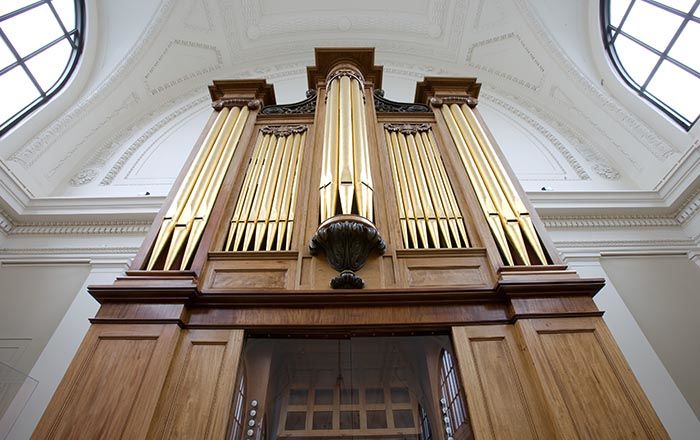Clarinet in C
Jérome Thibouville-Lamy French
Not on view
Clarinet in C made from boxwood with nickel-silver keywork and ivory ferrules. Because of its musical versatility, the clarinet is the leading woodwind instrument of the band and orchestra. Boxwood, a native European species, was used for clarinets until widespread trade made dense, tropical hardwoods like cocus and African blackwood readily availble.
Jérôme Thibouville-Lamy & Cie, abbreviated as "J.T.L.", was a French musical instrument making company, formed in the middle of the 19th century from the merger of pre-existing makers. Louis Émile Jérôme Thibouville (born Mouettes / La Couture 1 February 1833, died 1902), son of the musical instrument maker Louis Martin Thibouville (born 1807) and Marie Josephine née Grandin joined in ca. 1857 the instrument making firm Husson-Buthod, renamed then Husson-Buthod &Thibouville. The name Jérôme Thibouville-Lamy was adopted around 1867, after he married Marguerite Hyacinthe Lamy, a cousin of his business partners, and upon becoming owner of the firm he renamed it using their combined names. (http://www.corilon.com/shop/en/info/jerome-thibouville-lamy-jtl.html)
Overall size: 494 without mouthpiece
Bore: c-hole 13.6; f-hole 13.6
Conical part: 130
Technical description: Boxwood with ivory ferrules and German silver keywork. Five pieces: Mouthpiece [missing], barrel, upper section, lower section, bell. European-style barrel. Speaker liner projects ca. 4mm into the bore and has a little chimney on the back of the instrument. Levers for L4, tone-hole and key for R4 mounted in a fusiform swelling. No thumb rest intended. No guidance for F♯3/C♯5 lever. Springs attached to keys and sliding over a small German silver plate in order to get a dependable and safe mechanism.
L0: T; speaker.
L1: T; throat A♮; throat A♭.
L2: T.
L3: T; E♭4/B♭5.
L4: C♯4/G♯5; E3/B♮4; F♯3/C♯5.
R1: T.
R2: T.
R3: T; B♭3/F♮5; side B♮3/F♯5.
R4: T; G♯3/E♭5.
Keyhead type: saltspoon
Keymount type: screwed-in pillars, swelling
Inscribed on all pieces with a lyre in auriole / "J.TL" and on bell also "JÉRÔME / THIBOUVILLE-LAMY / PARIS"
(Heike Fricke, 2014)
